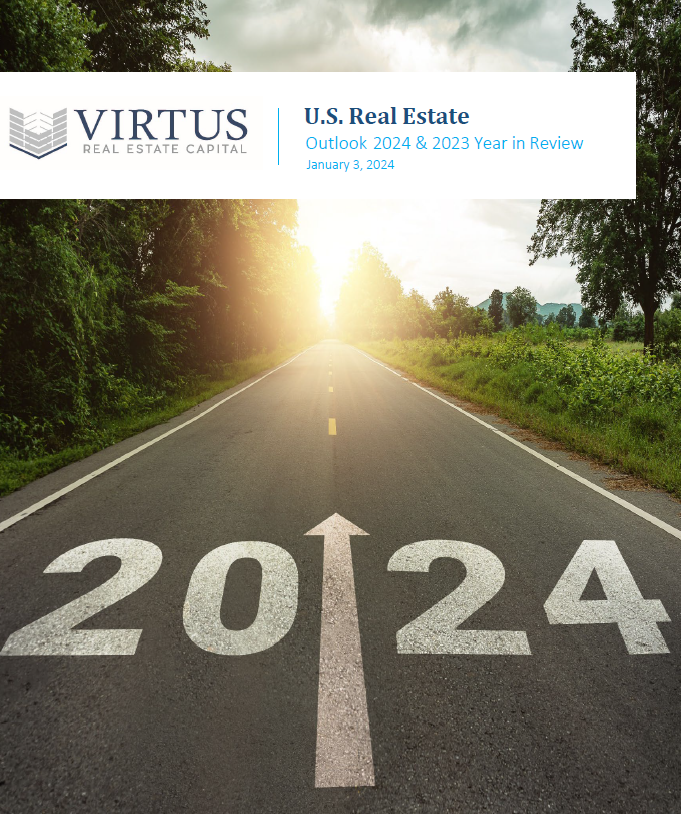Cycle-resilient property segments performed better during the Global Financial Crisis, and in our current COVID reality, they are doing so again.

This is an ongoing series. To start at the beginning, click here.
Cycle-resilient property segments performed better during the Global Financial Crisis, and in our current COVID reality, they are doing so again.
Yet, despite their outperformance, due to the unique nature of these asset types, there is always distress on the fringes. In a post-COVID world, that distress will only become more widespread. In this four part series, we’ll examine this unprecedented opportunity in “resilient distressed” segments.
In the second part of this series, we’ll look at the three types of challenges from which distress originates.
The Origins of Distress in Cycle-Resilient Segments
Distress originates from three types of challenges in our property segments that have nothing really to do with tenant demand. The biggest challenge we have seen for property owners in recent years, ourselves included, is too much new supply being delivered at one time. This has been especially acute in student housing, senior living, and self-storage. For that reason and others, Virtus exited its entire student housing and self-storage portfolios in 2017 and 2018 respectfully, and we also began decreasing our targeted allocation to senior living beginning in 2018. Although the vast majority of properties in these categories will eventually absorb the new supply due to robust demand, many owners will not have the capability or patience to hold until that point.
There are always operational challenges in our property types. There are characteristics of operating a student housing community that does not exist in traditional multifamily. Senior living is the most operationally intense of all asset classes, where an owner might make a good real estate decision, yet have a property severely underperform its full potential. Traditional office owners have struggled for decades trying to deal with the unique needs of healthcare tenants in medical office buildings (“MOB”). Although self-storage seems operationally simple on its face, we have found many owners through the years making operational and marketing mistakes that lead to distress. The fact of the matter is if you do not have an owner and operator who is specialized in the targeted asset class, and understand all of those operational nuances, even a good real estate decision can go awry.
The third challenge we often see is capital structure distress. Limited maturity, higher leverage, and/or mezzanine debt have historically been the primary culprits. This has admittedly been less of an issue for most owners in recent years because lenders have generally been more prudent in terms of leverage levels, terms, and covenants than they were immediately preceding the GFC. However, those capital structure issues will increase coming out of this pandemic for numerous lender categories.
In particular, the debt funds are going to struggle, as will their borrowers. Nearly $500 billion was raised in CRE debt funds from 2015 to 2018, promising outsized yields to investors in a yield starved world. The traditional CRE lenders, such as insurance companies, commercial banks, and the agencies (FNMA, FRMC, HUD), were already providing very attractive lending terms and low interest rates to the most qualified borrowers, albeit at more prudent leverage limits. For all these new debt funds to compete, they have had to offer higher leverage, be willing to lend to less qualified borrowers, go to less liquid markets, and/or focus on lower quality or transitioning assets. In many cases, they have been refinancing struggling properties that had debt on them from traditional lenders, which allowed many of the borrowers to extend longer than otherwise. That music is likely going to stop over the next two years for several of these borrowers and their lenders. Borrowers will struggle more due to the temporary challenges from COVID. Debt funds are usually very short-term, typically three to five years, and often have onerous debt covenants after the first two years. In other words, if a borrower is not hitting their business plan by month 24, they are likely to start busting through loan covenants and be in default. The lender is looking for a way to take the asset and sell it elsewhere. However, it may be tough to be made whole if the value of the asset has declined. This is further exacerbated by the fact that all CRE lenders, including debt funds, have more exposure to traditional CRE that is performing and will perform far worse than the more resilient asset classes. For those debt funds with warehouse lines, this problem will be intensified, as warehouse lines may be called because the debt fund cannot satisfy its obligations. In other words, there will be a liquidity crunch, and fresh capital investing at a lower basis will likely be the solution.
Through the years, most distressed deals are a combination of more than just one of these challenges. For example, an over-supplied market and/or an operational misstep combined with short-term transitional debt can be a recipe for disaster. That is why we think the low hanging fruit for buying distress in this environment will be the properties that were already struggling pre-COVID. These should be the first to fall in 2020 and 2021, whereas more expansive distress triggered by COVID challenges will likely come in 2022 and beyond.










